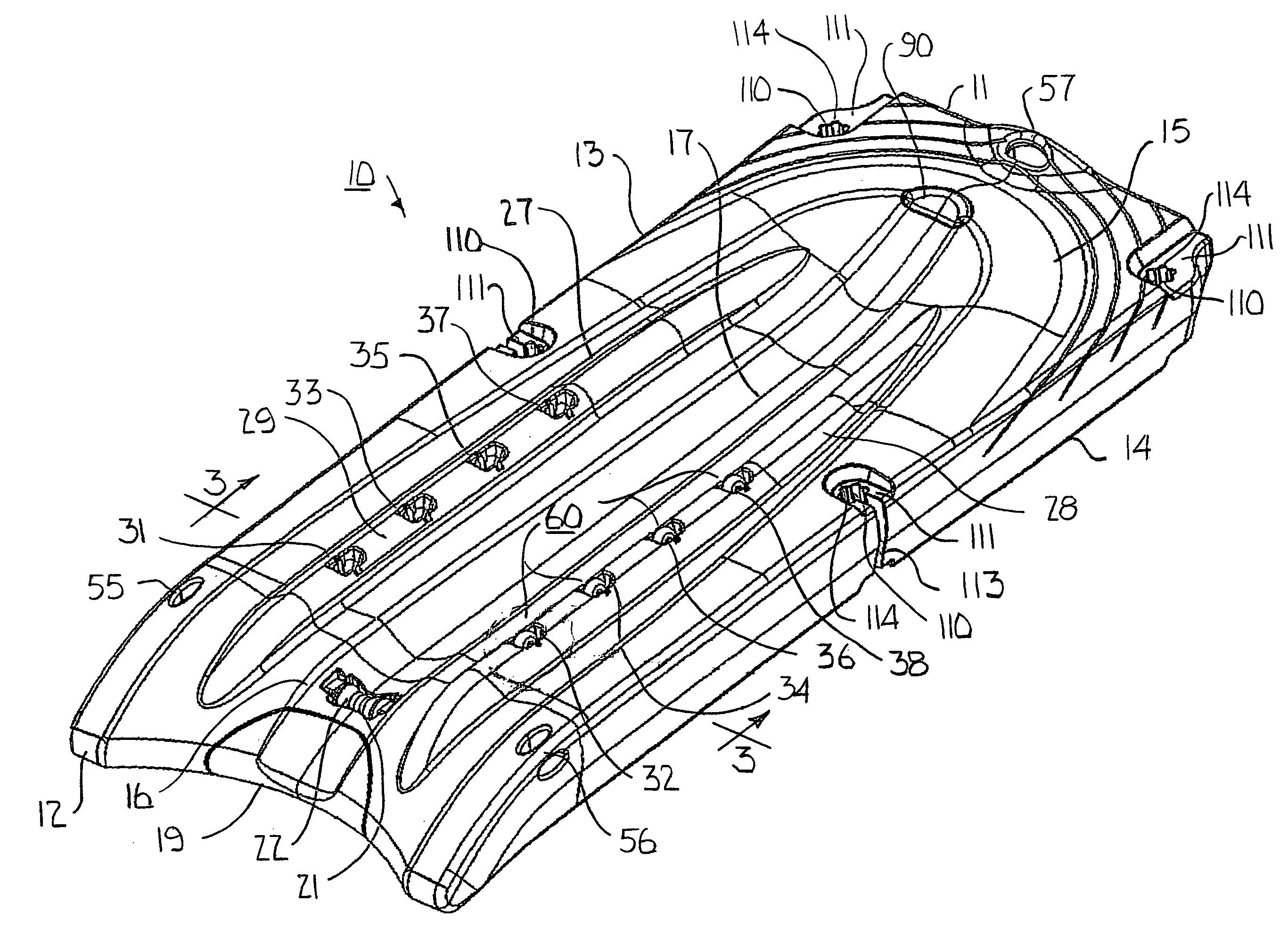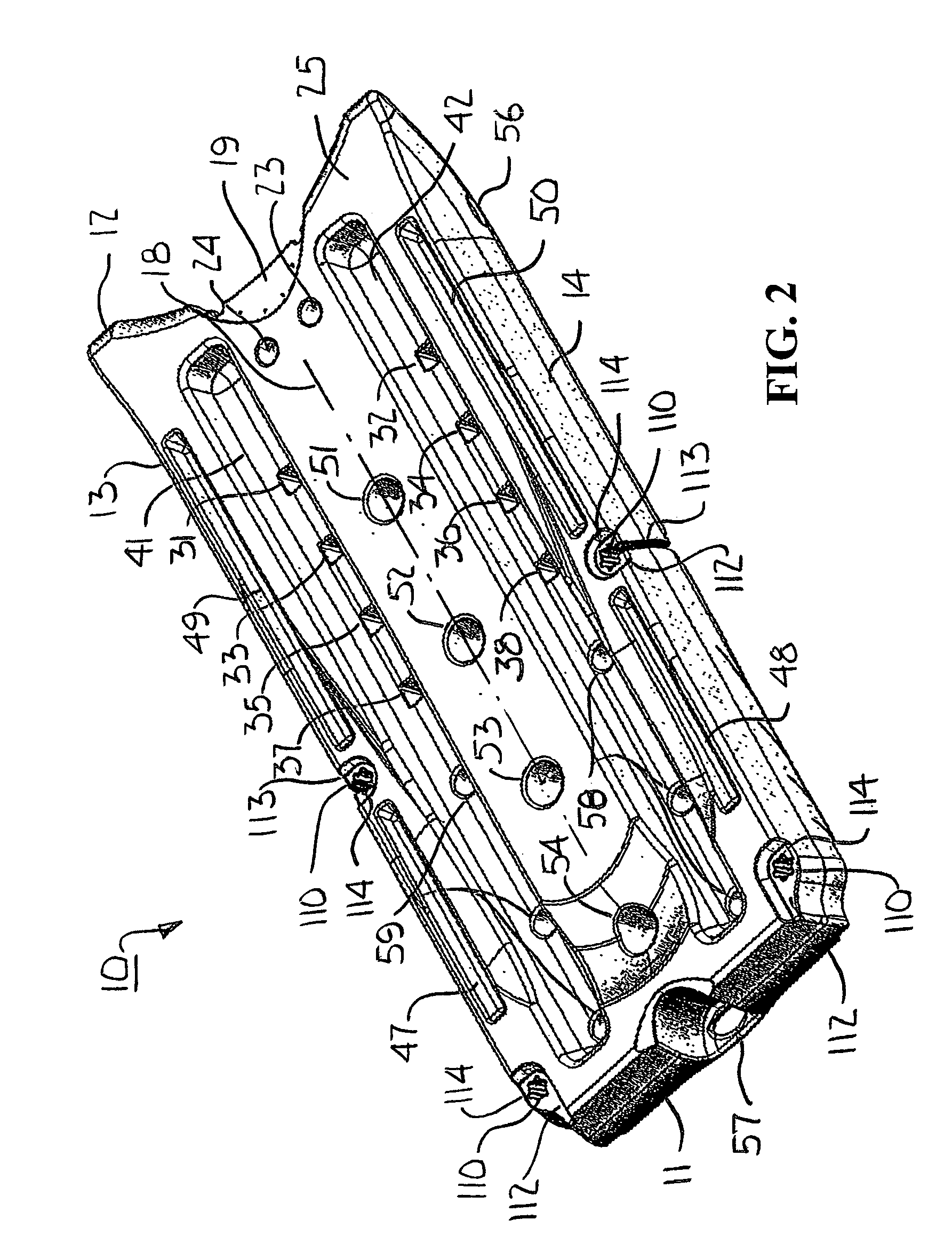Roller assembly for floating dock
a floating dock and roller technology, applied in the field of floating docks, can solve the problems of keel or hull damage, roller wearout or damage, affecting the orientation of the boat, etc., and achieve the effect of less surface contact, easy docking and launching, and reduced assembly stress
- Summary
- Abstract
- Description
- Claims
- Application Information
AI Technical Summary
Benefits of technology
Problems solved by technology
Method used
Image
Examples
Embodiment Construction
[0027]Turning first to FIGS. 1, 2 and 3, a floating dock 10 is provided for a personal watercraft having a hull which angles upwardly on both sides of its keel at an angle of approximately 16 to 22 degrees above horizontal (not shown). As seen in FIG. 1, the dock 10 has bow and stern walls 11 and 12 and port and starboard sidewalls 13 and 14 defining its perimeter. The perimeter of the dock 10 is generally orthogonal but the stern wall 12 is indented to better receive the arcuate contour of the bow of the watercraft as it makes docking contact with the dock 10. The dock 10 has a top surface 15 contoured for several specific purposes. The stern portion of the top surface 15 tapers downwardly so as to facilitate the docking and launching operations of the watercraft onto and from the dock 10. The top surface 15 has a keel valley 16 with its nadir 17 aligned in a vertical plane through the longitudinal center axis 18 of the dock 10. The stern end of the keel valley 16 includes a remova...
PUM
 Login to View More
Login to View More Abstract
Description
Claims
Application Information
 Login to View More
Login to View More - R&D
- Intellectual Property
- Life Sciences
- Materials
- Tech Scout
- Unparalleled Data Quality
- Higher Quality Content
- 60% Fewer Hallucinations
Browse by: Latest US Patents, China's latest patents, Technical Efficacy Thesaurus, Application Domain, Technology Topic, Popular Technical Reports.
© 2025 PatSnap. All rights reserved.Legal|Privacy policy|Modern Slavery Act Transparency Statement|Sitemap|About US| Contact US: help@patsnap.com



